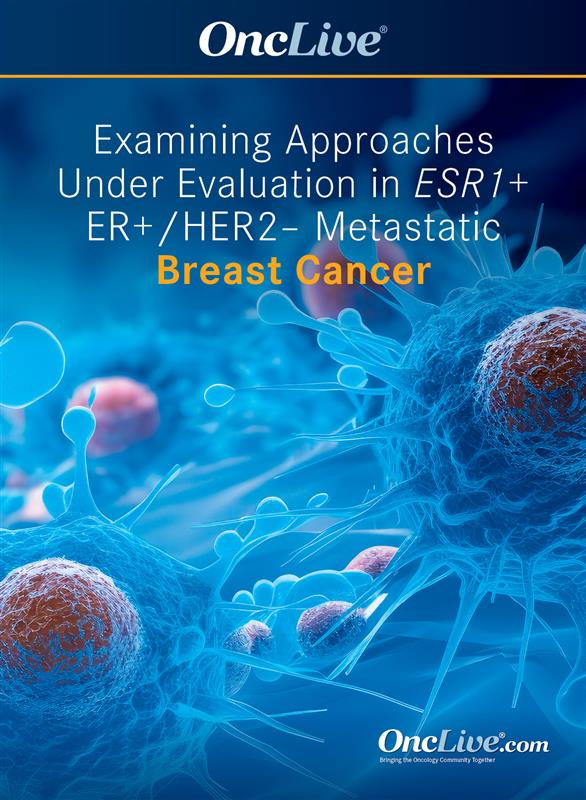Dr Wander on Genomic Alterations in ER+/HER2– Metastatic Breast Cancer
Seth Wander, MD, PhD, discusses findings from an analysis of baseline genomic alterations in patients with estrogen receptor–positive, HER2-negative metastatic breast cancer who were enrolled in the single-arm, phase 2 ELAINE-2 trial of lasofoxifene plus abemaciclib.
Seth Wander, MD, PhD, medical oncologist, Massachusetts General Hospital, instructor, medicine, Harvard Medical School, discusses findings from an analysis of baseline genomic alterations in patients with estrogen receptor–positive, HER2-negative metastatic breast cancer who were enrolled in the single-arm, phase 2 ELAINE-2 trial (NCT04432454) of lasofoxifene plus abemaciclib (Verzenio).
Twenty-six of the 29 patients enrolled onto ELAINE-2 harbored baseline ESR1 mutations and had received prior CDK4/6 inhibitors. In this biomarker subset, the median progression-free survival (PFS) with lasofoxifene plus abemaciclib was 12.9 months, and the clinical benefit rate was 73.1%.
Wander notes that this exploratory analysis was conducted in a relatively small patient cohort, and thus should be used for hypothesis generation and signal finding. The patients with co-occurring TP53 mutations (n = 11) had a median PFS of 8.3 months, which was slightly lower than the median PFS in the overall study population. This outcome was expected, as TP53 mutations are a potential biomarker of unfavorable outcomes, which may be related to their genomic instability.
Patients with disease harboring co-occurring PIK3CA mutations (n = 8) also had a lower median PFS than that of the overall population, at 7.8 months. Additionally, a small number of these patients had received prior PI3K inhibitors. These findings necessitate further investigation to determine which patients with PIK3CA mutations had received prior PI3K inhibition, given that the armamentarium of PI3K and AKT inhibitors is evolving both in the United States and around the world, Wander says.
Furthermore, patients with co-occurring CCND1 amplifications (n = 6) or co-occurring FGFR1 amplifications (n = 5) had a higher median PFS than that of the overall population, at 16.6 months in both subgroups. One patient in this study had disease harboring an RB1 mutation. This patient had a median PFS similar to that of the overall population, at 11.0 months, Wander concludes.




